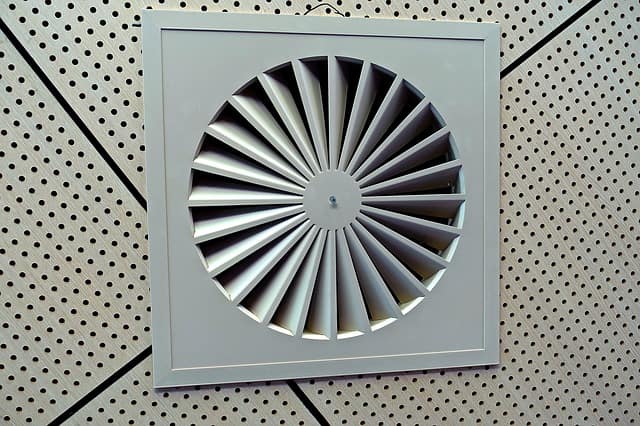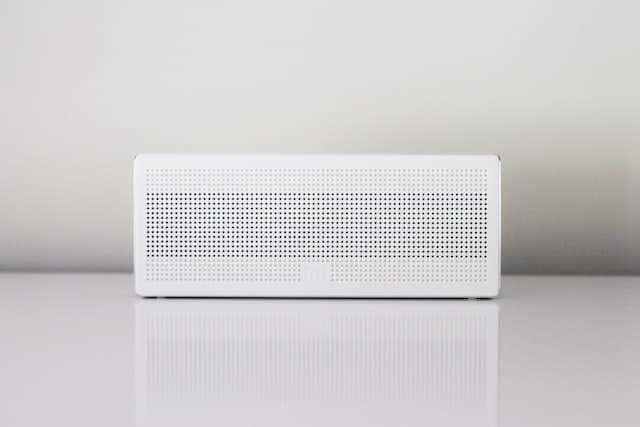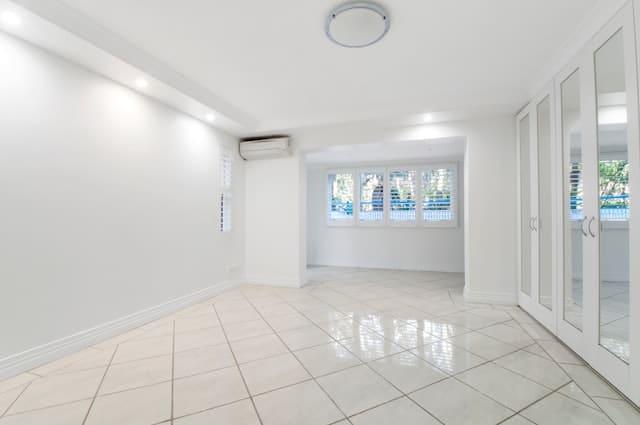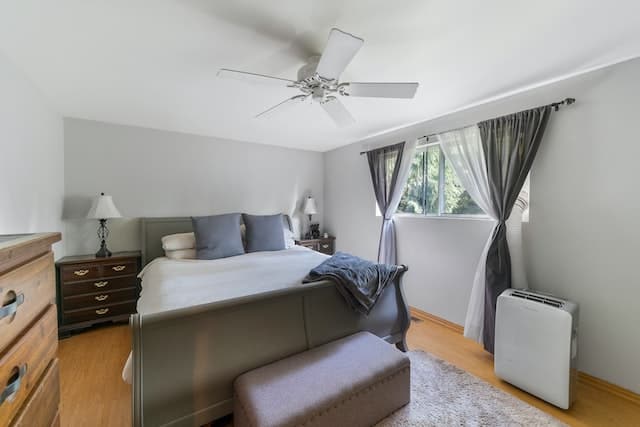In this article, we will discuss how to circulate hot air from the ceiling. Staying cool during the summer can be challenging and most of the time, we rely on the air conditioning system to provide a comfortable temperature in the room. But did you know that air circulation plays an important role in cooling the house, especially in those with high ceilings? Let us learn more about this below.
How do you circulate hot air from the ceiling? Using box fans, ceiling fans, whole-house fans, insulated attic fan doors, portable air conditioners, ductless AC, in-wall insulation, and ventilator fan are some of the methods that you can use to circulate hot air from the ceiling.
Ceiling fans are an ideal way to stay cool during the summer and they can also distribute warm air during the winter. Aside from ceiling fans, there are also other methods to circulate hot air from the ceiling. We will talk about these methods below. We will also discuss more tips and ideas about how to properly circulate hot air from the ceiling.

How to Circulate Hot Air from the Ceiling?
You can use portable air conditioners, mini-split AC, ceiling fans, and in-wall air conditioners to circulate hot air from the ceiling. Let us delve more into these below.
Portable Air Conditioners
These are good alternatives if you do not have a window unit at home. The advantage of using portable air conditioners is that they are easy to operate and can be moved from one place to another. On the other hand, the downside of using portable air conditioners is that they tend to be more expensive and also use more energy. These types of air conditioners are similar to window units when it comes to their operation.
Mini-Split AC
The advantage of using a mini-split AC is that they do not need ductwork and they can run to more rooms. Mini-split AC is smaller in size, operates quietly, and has individual zoning which effectively lets you cool only one room. It is also energy-efficient.

In-wall Air Conditioner
If you do not want to use a window unit, you can choose an in-wall air conditioner for your home. This type of air conditioner requires a frame opening just like in window-type air conditioners. The difference between an in-wall air conditioner and a window unit is that the in-wall features vents on the back instead of along the sides. Moreover, in-wall air conditioners are flushed or extended slightly from the exterior wall.
Fans
To circulate air from the ceiling, you can use a ceiling fan. The fans should run at their lowest speed. Rooms with high ceilings can benefit from using a ceiling fan because it can effectively distribute warm or cool air throughout the room. During the winter, the fan spins with the blades rotating to push down the heat from the high ceiling to the ground. During the summer, the fan rotates in the opposite direction to push cool air upward and make the room cooler.
How Does a Ceiling Fan Circulate Heat?
Ceiling fans circulate heat with the use of their blades. The blades push air up and allow the fan to distribute heat effectively. When the blades spin, the air is drawn from around the room and pushed to the ceiling. Moreover, air at the top of the room is pushed to the walls of the room before moving back to the ground. Take note that hot air rises and the air near the ceiling are warmer. Using the ceiling fan, warm air is pushed to the ground making the room feel warm and comfortable.

Do Ceiling Fans Distribute Heat?
Ceiling fans distribute heat which can be ideal during the winter season. While ceiling fans are effective in cooling off the house during the summer, they can also be used in the winter to help the heating system of your home. Hot air rises, and because of this, most of the energy that the central heating uses goes to the top of the room near the ceiling.
Running the ceiling fan in reverse will push hot air from the ceiling, along the walls, and into the ground. You can also check out this article that we have shared that talks about how to circulate air in vaulted ceilings. We have shared tips and ideas that you can refer to.
Types of Fans Used to Remove Hot Air from Ceiling
Box fans, ceiling fans, ceiling fans, whole-house fans, and insulated attic fan doors are some of the types of fans that you can use to remove hot air from the ceiling. Bear in mind that AC units are not the only way to circulate air and cool down the temperature in a house. Below are the different methods that you can use to make your house more comfortable.

Box Fans
You can use a box fan to circulate air around the room. Do not open the windows and doors of your home if the outdoor temperature is hotter. Rather, make sure to keep the air moving inside your house. However, if the temperature outdoors is cooler, you can open your windows and doors to let cool air inside. Then, use a box fan to circulate the air.
Make sure that the fan is placed in a window so that it can blow cool air into the room. Moreover, placing a box fan in the window can effectively draw in cool air and expel hot air. Take note that heat rises, so ensure that you open the windows on the upper floors to let hot air out.
Ceiling Fans
Another way to cool a hothouse and maintain air circulation is by using a ceiling fan. The ceiling fan creates a breeze and helps increase the evaporation from the skin which also makes you feel cool. Make sure that the ceiling fan spins counterclockwise to have a cool temperature in the room. Some ceiling fans have a reverse switch to allow heated air circulation in the winter. We have also shared this article titled; do ceiling fans work with vaulted ceilings? Read the article for an in-depth discussion about the topic.

Whole-House Fans
You can also use a whole-house fan. This type of fan uses one-tenth as much power as the air conditioning system. A whole-house fan can be able to draw in cool outside air through doors and windows which creates a pleasant breeze that effectively pushes hot air out of your home.
Insulated Attic Fan Door
Another method that you can is to install insulated attic fan doors. When the fan is odd, the door also closes. The fan draws cool air through open doors and windows and pushes it to the attic and out of the roof vents. Insulated attic fan doors push hot air out from your home and cool your house and attic. These fans are usually installed in upstairs stairwells with a space of about three feet between the fan and the ceiling.
✅ Video – 12 Ways to Escape the Heat If You Don’t Have an Air Conditioner
Bright Side shared the video below on YouTube. It discusses the 12 ways how to escape the heat if you do not have an air conditioner at home. In the video, simple and effective ways to escape the heat inside your home are discussed. Check out the video for more information.
Do Ceiling Fans Help in Winter?
Ceiling fans can help maintain a warm temperature during the winter. The use of ceiling fans in the cold season is considered an economical way to keep warm. Using the ceiling fan and the heating system together can lower your energy bill. During the winter, ceiling fans should spin in a clockwise direction. In this direction, the fan will push cold air to the ceiling. Make sure to set the ceiling fan in its lowest setting so that warm air will circulate from the ceiling to the floor.
Why Use a Ceiling Fan with Air Conditioning?
Using a ceiling fan with air conditioning will effectively circulate air throughout the room without having your electric bills skyrocketing. In the summer, the ceiling fan will push warm air that gathers near the ceiling to the ground making sure that air is properly circulated. Moreover, using a ceiling fan will make it easier for your AC unit because it does not have to work overtime to cool a room.
How to Get the Right Angle for Ceiling Fans?
The angle of the ceiling fan plays an important role in air circulation. Make sure that the ceiling fan blades have an angle that is set to a minimum of 12 degrees to achieve maximum cooling. Furthermore, you can adjust the angle to a larger degree. However, take note that any angle that is above 16 degrees may blow around loose objects. Ideally, you should install more ceiling fans for larger rooms. We have also shared this article that discusses if high ceilings are harder to heat. Check out the article to learn more about high ceilings and how they are heated.

How to Circulate Air with Fans?
The direction where the ceiling fan spins will affect air circulation. During the summer, the ceiling fan should rotate counterclockwise. Counterclockwise rotation will push the air from the ceiling to the floor which creates a wind chill effect. During winter, the ceiling fan should rotate in the opposite or clockwise direction. Clockwise rotation will push air from the ground to the ceiling so heat can circulate and keep the room feeling warm.
Conclusion
In this article, we have discussed how to circulate hot air from the ceiling. We have found out that there are many ways to circulate air throughout the room. Simple ways like setting the ceiling fan on its lowest speed can affect the temperature in a room. We have also shared the different methods that you can use to properly circulate air inside your room. Thank you for reading!